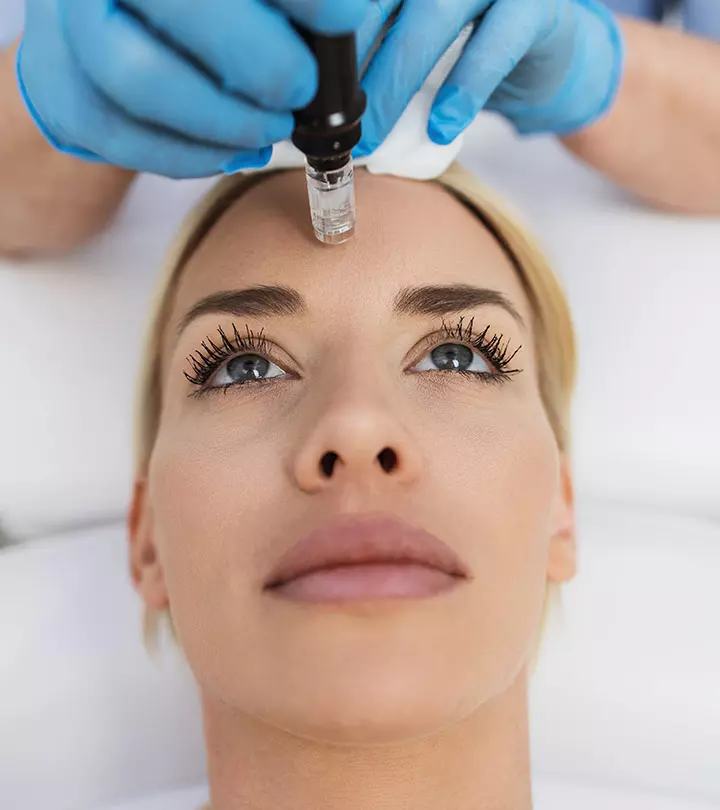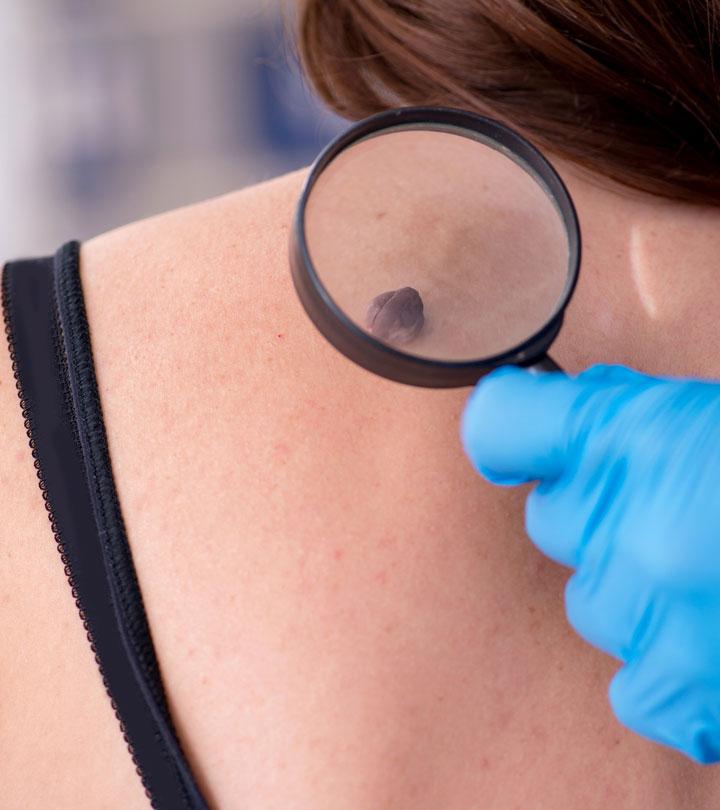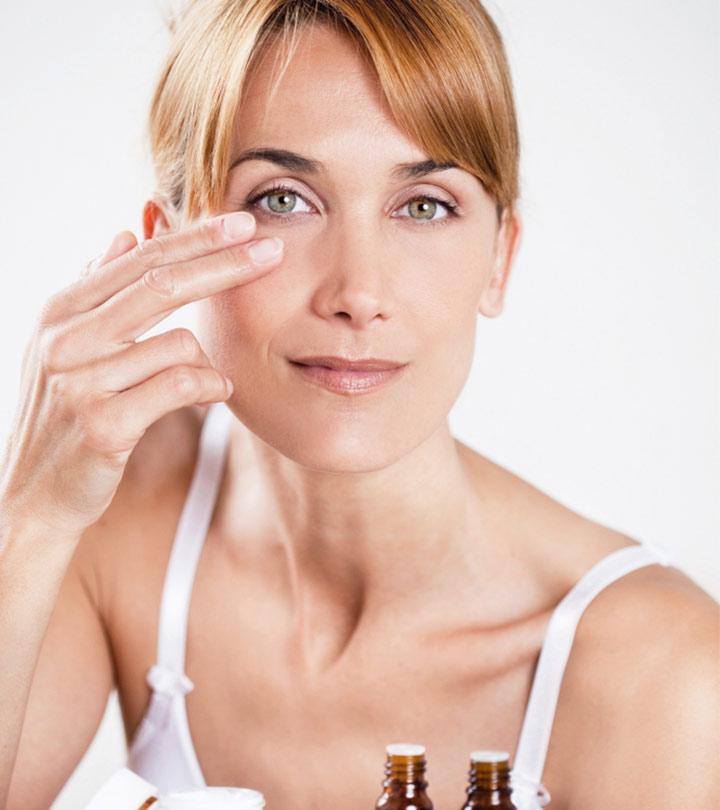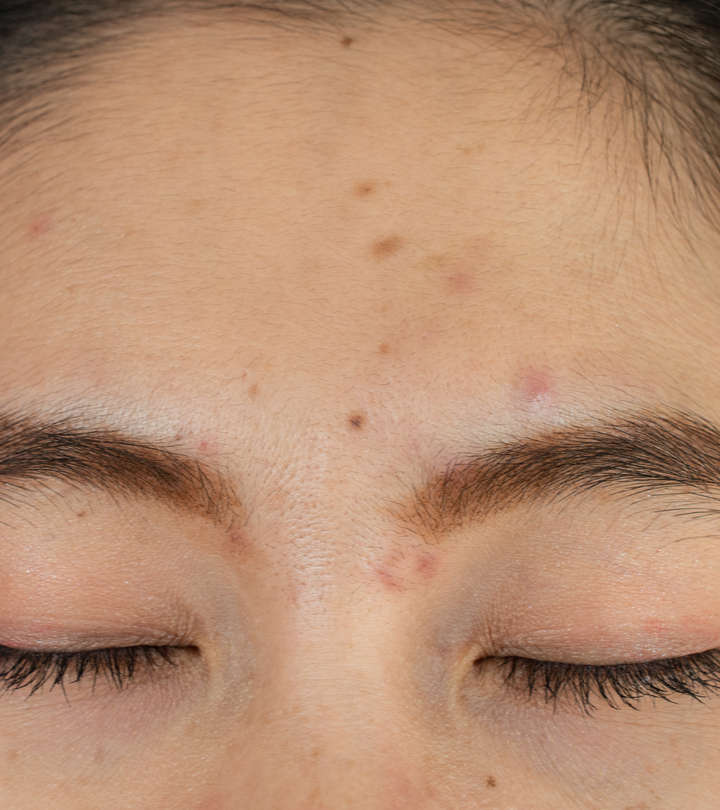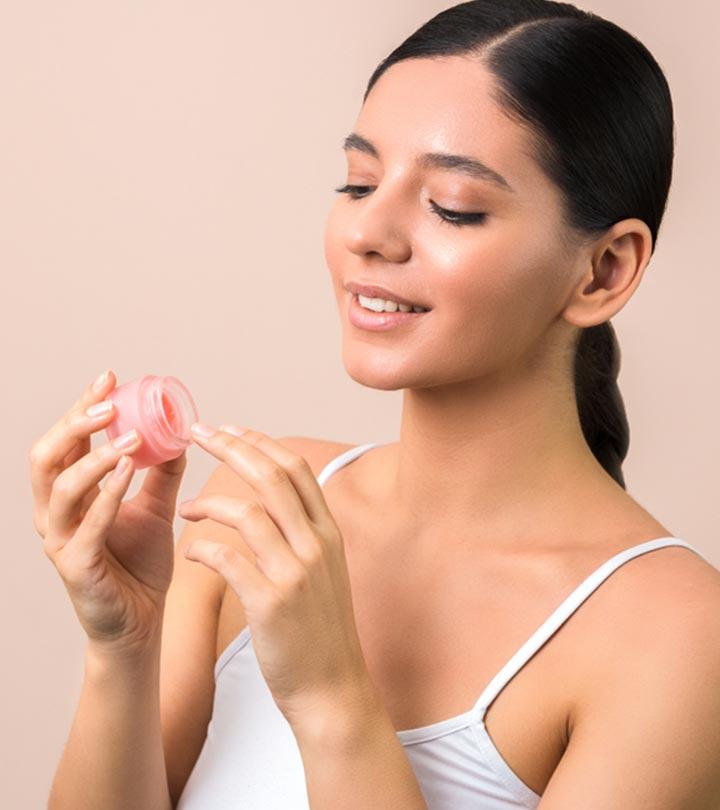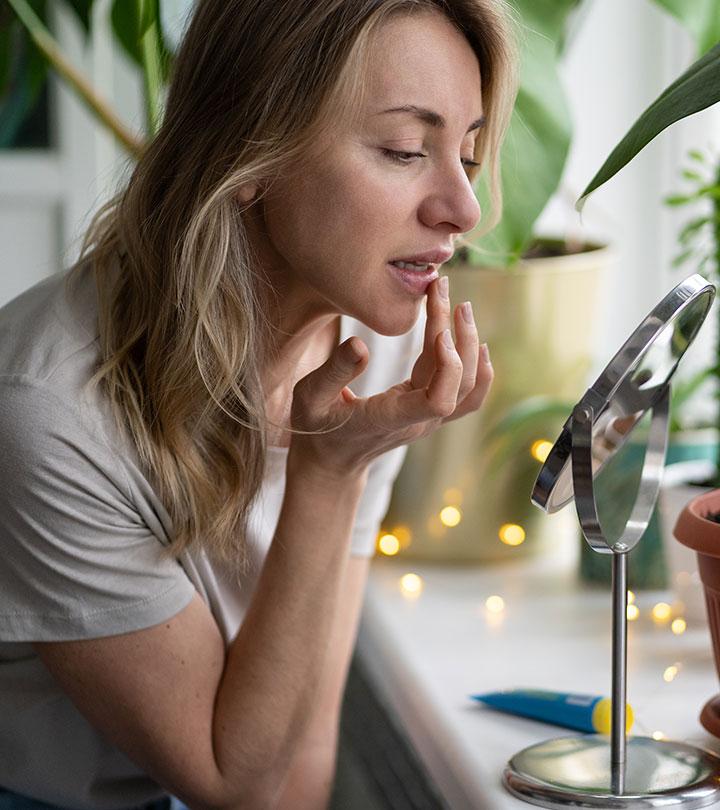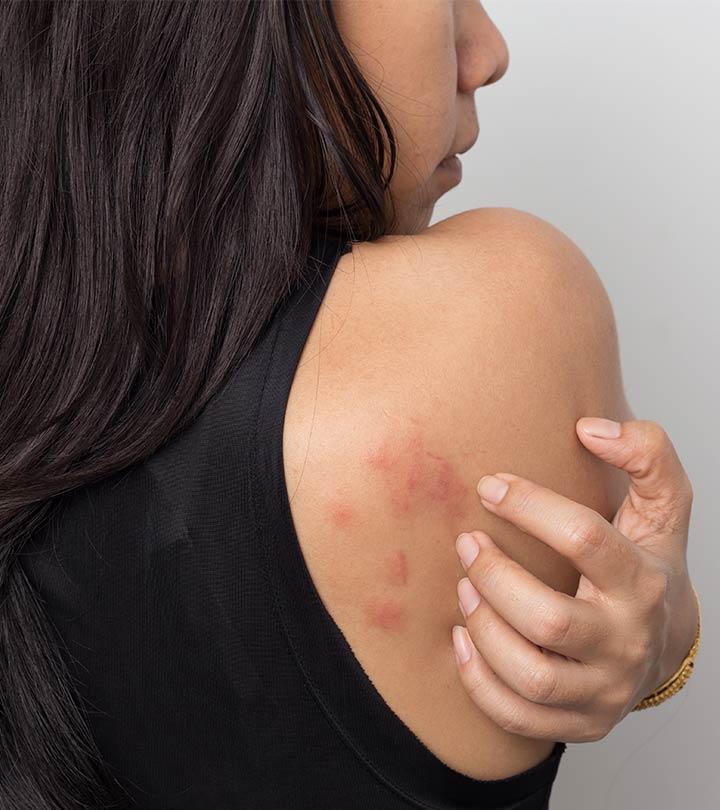Mederma Stretch Marks Therapy Cream: Is It Effective?
The hyaluronic acid, cepalin, and Centella Asiatica in this lotion may help get rid of the marks.
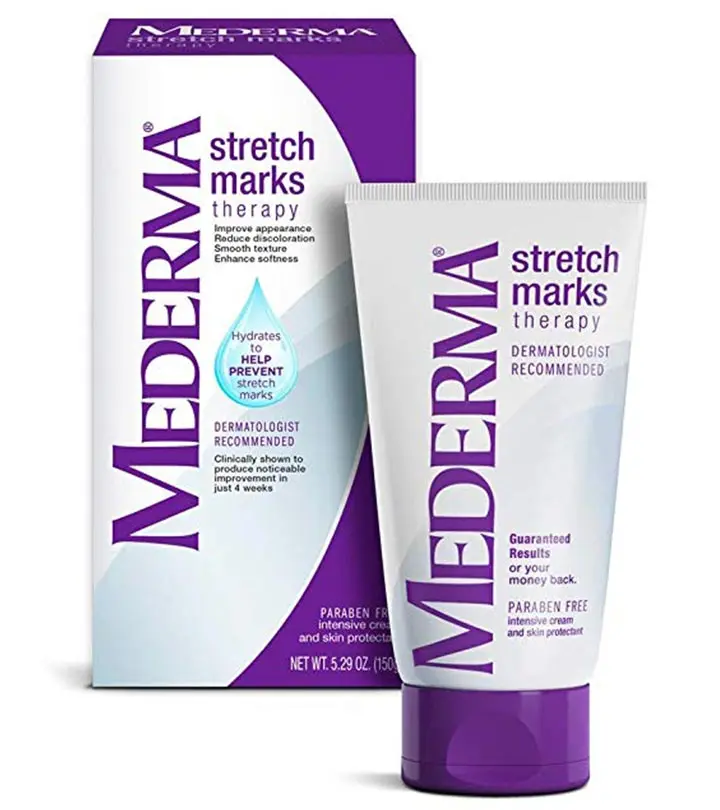
Image: Amazon
Stretch marks are common, and there is no need to feel compelled to get rid of them. You can, however, consider using topical lotions to improve their appearance. Fortunately, there is a remedy – Mederma for stretch marks!
The Mederma Stretch Marks Therapy lotion is marketed as an anti-stretch mark solution. Though there is not enough proof to establish that this cream works, anecdotal evidence suggests it does. In this post, we will look at how Mederma can help you get rid of stretch marks. Scroll down to find out more!
In This Article
Mederma Stretch Marks Therapy: Does This Cream Work?
Yes, as per anecdotal evidence, Mederma Stretch Marks Therapy cream works. However, no studies support the claims made by the brand about the efficacy of its product.
However, moisturization and occlusion therapy can help improve the appearance of your stretch marks (by reducing TEWL or Transepidermal Water Loss) (1). The Mederma Stretch Marks Therapy cream claims to lock in moisture, keep the skin hydrated, and improve the appearance of your stretch marks.
Though there is no evidence supporting the potency of Mederma, it may work because of the ingredients.
Mederma Stretch Marks Therapy ingredients include:
1. Cepalin
Cepalin is a bioflavonoid extracted from onions. A study claims that commercially available onion extracts can improve the appearance of surgical scars as they contain several bioflavonoids, including cepalin (2).
Stretch marks are anatomically similar to scars (1). Hence, cepalin may also work for stretch marks.
2. Hyaluronic Acid
There are limited studies supporting the role of hyaluronic acid (HA) in improving stretch marks. However, this key ingredient may help improve early stretch marks by keeping your skin hydrated. HA helps the skin retain water or moisture (3). As we are aware, hydrating and moisturization are key to improving stretch marks. Hence, HA may help in this regard (4).
 Trivia
Trivia3. Centella Asiatica
Centella Asiatica (or Gotu Kola) is widely used in K-beauty skin care products for its immense skin benefits including skin repair and wound healing. It helps improve elastin and collagen production, which may help improve skin elasticity and the appearance of stretch marks.
A study states that Centella Asiatica shows promising results in improving stretch marks (4). However, the study is not conclusive, and more research is needed in this regard.
The cream also contains dimethicone, which has both occlusive and emollient properties (5).
These ingredients make Mederma Stretch Marks Therapy an effective way to reduce the stretch marks. However, you have other popular options to choose from, like Bio-Oil.
Mederma Stretch Marks Therapy Vs. Bio-Oil
Bio-Oil is yet another product meant for dry skin, scars, and stretch marks. The company claims that 100% of the participants in their user trials experienced an improvement in just eight weeks. There is no study supporting the claims made by the brand. However, the ingredients of the oil may work in its favor.
The key ingredients of Bio-Oil are:
- Botanical oils (Calendula, lavender, rosemary, and chamomile oils)
- Retinyl Palmitate (Vitamin A)
- Tocopheryl Acetate (Vitamin E)
Retinyl palmitate is an ester of retinol and a type of vitamin A that naturally occurs in our epidermis. It mainly protects the skin from UV and sun damage (6) (which is crucial for fading stretch marks).
Topical vitamin E is an excellent antioxidant that keeps your skin healthy. It is also a free radical scavenger (7).
Apart from these key ingredients, Bio-Oil contains an oil-base, and together, all these ingredients might contribute to its stretch mark reducing effects.
Here are the key differences between the two products:
| Mederma | Bio-Oil | |
|---|---|---|
| Purpose | A cream specifically designed for stretch marks. | Multipurpose oil for dry skin and stretch marks. |
| Effectiveness | Contains ingredients that are clinically proven to reduce stretch marks (like onion extracts). | Contains a blend of plant oils and vitamins that focus more on improving skin health. |
| Other Ingredients | Contains dimethicone. | Contains mineral oil, synthetic fragrance, and dye. |
Bio-Oil is lightweight and gets absorbed in the skin quickly without any greasy feeling. On the other hand, Mederma Stretch Marks Therapy is a topical cream that may take time to get absorbed.
Both are extremely popular products, and a lot of users swear by them. It all depends on your personal preferences and, of course, the needs of your skin. But before picking any of these, make sure that your skin can tolerate the ingredients and is not allergic to any of them.
 Did You Know?
Did You Know?How Long Does It Take For Mederma To Work On Stretch Marks?
Results take time, be it Mederma on any other topical ointment you are using.
You have to be extremely patient and use the cream for at least a couple of months before you see any results. However, the company promises results within 12 weeks, and they even refund the money in case you see no result after a particular period.
Along the same lines, a blogger shared her experience of using Mederma cream and its effects on her skin. She said, “I did try lots of products, creams, and lotions but Mederma worked best for me. I applied it twice a day every day as recommended and one container lasted me for almost a month. I would rub a generous amount over my whole belly around my hips and even on my thighs; in total I would average around 10 applications a week. Within the first couple weeks I saw noticeable results where the marks showed significant fading and over the course of the treatment I was pleasantly surprised (i).” The blogger was of the opinion that although the scarring was still visible, the cream helped to reduce its appearance.
Are There Any Side Effects of Using Mederma For Stretch Marks?
It depends on what your skin can tolerate and if it is allergic to any ingredient. During pregnancy, your skin (along with your body) undergoes changes, and it may become intolerant to specific ingredients.
The most common symptoms of an allergic reaction are:
- Redness
- Stinging sensation
- Rashes
- Hives
- Burning sensation
- Itchiness
If you experience any of the above reactions, stop using the product and consult a doctor immediately.
Infographic: Mederma For Stretch Marks
Mederma is popularly known for reducing stretch marks. Some believe it is also effective for improving the overall skin quality. But is the product really effective? Does it cause any adverse effects? We have explored these questions in the infographic below. Take a look.

Illustration: StyleCraze Design Team
Using Mederma for stretch marks is considered one of the effective ways to fade their appearance. The cream keeps the skin moisturized and improves the appearance of the marks. In addition to topical treatments, other methods such as dermatology procedures, cosmetic surgery, and laser therapy can also be used for scar treatment. In the end, it all boils down to how you are treating your skin. The results may also vary depending on the skin type, severity of the marks, your skincare routine, and other factors. If the stretch marks are fresh (red or purple), you may see fast results. However, recovery may take longer than expected if the marks are white and old, as the cream cannot completely erase the marks.
Frequently Asked Questions
Can you use too much Mederma?
No, overuse of Mederma may lead to side effects like burning, irritation, or redness. If you experience any of these symptoms, stop using it immediately and consult a doctor. To avoid this, follow the directions given on the label properly.
When should you not use Mederma?
Avoid applying Mederma on open wounds, broken skin, animal bites, or severe burns.
Can Mederma Stretch Mark Therapy be used on Atrophic Scars?
Anecdotal evidence suggests that it can be used on atrophic scars such as acne and those left by chicken pox. However, it’s best to consult with a dermatologist for a proper assessment of treatment options suitable for you.
Key Takeaways
- Mederma Stretch Marks Therapy cream promises to lock in moisture, hydrate the skin, and improve the appearance of stretch marks.
- Its formulation is rich in hyaluronic acid, cepalin botanical extracts, and other ingredients that reduce stretch marks and scars.
- The results also depend on your skin type and how old your scars are, but the brand promises noticeable results in 12 weeks.
Are you struggling to find a way to make those stretch marks disappear? Check out the video below to understand how to use Mederma to reduce the appearance of stretch marks!
Personal Experience: Source
StyleCraze's articles are interwoven with authentic personal narratives that provide depth and resonance to our content. Below are the sources of the personal accounts referenced in this article.
i. Kelly’s Mederma Stretch Mark Therapy Reviews | Does Mederma Really Work?https://medermareviews.wordpress.com/mederma-reviews-mederma-stretch-mark-cream-reviews/
References
Articles on StyleCraze are backed by verified information from peer-reviewed and academic research papers, reputed organizations, research institutions, and medical associations to ensure accuracy and relevance. Read our editorial policy to learn more.
- Rawlings, A V et al. “A review of the effects of moisturizers on the appearance of scars and striae.” International journal of cosmetic science vol. 34,6 (2012): 519-24. doi:10.1111/j.1468-2494.2012.00751.x
https://pubmed.ncbi.nlm.nih.gov/22994859 - Draelos, Zoe D et al. “A new proprietary onion extract gel improves the appearance of new scars: a randomized, controlled, blinded-investigator study.” The Journal of clinical and aesthetic dermatology vol. 5,6 (2012): 18-24.
https://www.ncbi.nlm.nih.gov/pmc/articles/PMC3390235/ - Hyaluronic acid: A key molecule in skin aging. Dermato-endocrinology, US National Library of Medicine, National Institutes of Health,
https://www.ncbi.nlm.nih.gov/pmc/articles/PMC3583886/ - Farahnik, B., et al. “Striae Gravidarum: Risk Factors, Prevention, and Management.” International Journal of Women’s Dermatology, Elsevier, 6 Dec. 2016.
www.sciencedirect.com/science/article/pii/S2352647516300272. - Chularojanamontri, Leena et al. “Moisturizers for Acne: What are their Constituents?.” The Journal of clinical and aesthetic dermatology vol. 7,5 (2014): 36-44.
https://www.ncbi.nlm.nih.gov/pmc/articles/PMC4025519/ - Oliveira, Marcela B et al. “Topical application of retinyl palmitate-loaded nanotechnology-based drug delivery systems for the treatment of skin aging.” BioMed research international vol. 2014 (2014): 632570. doi:10.1155/2014/632570.
https://www.ncbi.nlm.nih.gov/pmc/articles/PMC3977527/ - VKeen, Mohammad Abid, and Iffat Hassan. “Vitamin E in dermatology.” Indian dermatology online journal vol. 7,4 (2016): 311-5. doi:10.4103/2229-5178.185494.
https://www.ncbi.nlm.nih.gov/pmc/articles/PMC4976416/
Read full bio of Dr. M. Khawar Nazir
Read full bio of Eshna Das
Read full bio of Shiboli Chakraborti













